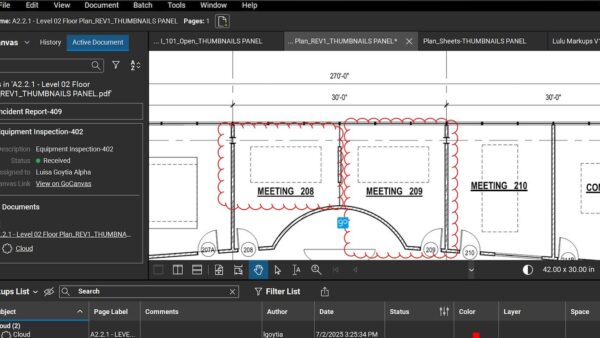In a discussion hosted by BIM+ earlier this week, BIM Task Group chairman Mark Bew outlined the key priorities in the Level 3 Strategic Plan – and fielded questions from the consulting, contracting and client world.
A 4 minute video with highlights of the event – attended by David Philp FCIOB, Neil Thompson of Balfour Beatty, Dave Glennon of Aecom and Sonia Zahiroddiny of Transport for London – is posted below.
Bew expanded on the industry’s journey to fully interoperable, real-time BIM by 2025, along with the cultural and behavioural changes promoted by fully transparent “Facebook-style” interactions along the supply chain.
But he acknowledged that businesses would progress up the slope of the “Bew Richards maturity wedge” at different speeds: “We drew the Level 3/4 journey as a ramp deliberately, we knew we had to bring 3 million people up that ramp to ease people along the journey and give them a decent amount of time to prepare.”
Messages from the event include:
- The BIM Task Group has a “10-year plan” for achieving Level 3 BIM, with five years of preparation followed by five of implementation.
- The first Level 3 “early adopter” projects will get underway in 2017/18.
- Level 3 will create a “transparent” world where all transactions along the supply chain – including e-payment for subcontractors and the execution of a new generation of online contracts – are as intuitive as posting on Facebook.
- The industry needs to draw in a cohort of computer scientists and data analysts to develop the tools and apps needed to deliver Level 3 BIM.
- The current BIM Task Group will be in place until April 2016, when it will hand over to a “legacy organisation”.
Bew reiterated the report’s view of Level 3 BIM’s five priorities. The first three are: providing more with less; maximising availability of public resources and networks, where he cited “intelligent motorway networks that use capacity in a more intelligent way”; and reducing cost and carbon.
On priority four, enabling domestic and international growth, he said this was “not only to deliver our own domestic requirements, which with urbanisation and population growth are getting bigger, but overseas, especially in high-end consultancy and in construction and manufacturing services” – thereby helping to meet the Construction 2025 target of a 50% increase in exports.
Fifthly, ensuring the UK remains in the international vanguard of the digital economy in the built environment, where Bew cited the “new engineering” of “high-end analytics, design, and Internet of Things, those value-added services. It would be nice over the coming years to get people to realise this is still proper engineering, if less tangible.”
But he also highlighted a new incicpient skills shortage for the industry – a lack of computer scientists and data specialists.
“To facilitate that growth, the industry will need to compete to recruit a generation of data analysts and data scientists – but we’re dipping into the same pool that pharmaceuticals or financial services are. So we’ve got to make ourselves massively attractive and make sure that what we do drives the profitability to make sure that people want to come into construction.”
And addressing the criticisms that the document is premature, given the distance still to travel on Level 2, Bew said: “If we don’t set our sights on 2025, we’ll never hit it. But by starting now, by the time we’re taking it to market we’ll be doing it in a really organised way.
“If we hadn’t published it, we’d have been criticised for not publishing it, and not giving the computer software industry the pipeline for the future. It’s a cultural change where I think the only comparison is the way industry stepped up on health and safety [in the early 2000s],” he said.
But although Level 3 BIM will be transformative culturally, technically and commercially, Bew stressed that many of the fundamentals of construction management will remain in place.
“Every project will still need really good quality commercial and design management – we need to train people in the skills of project management, commercial and design management, and we’ll need more people capable of managing complex scenarios,” he added.
We drew the Level 3/4 journey as a ramp deliberately, we knew we had to bring 3 million people up that ramp to ease people along the journey and give them a decent amount of time to prepare.– Mark Bew, BIM Task Group














